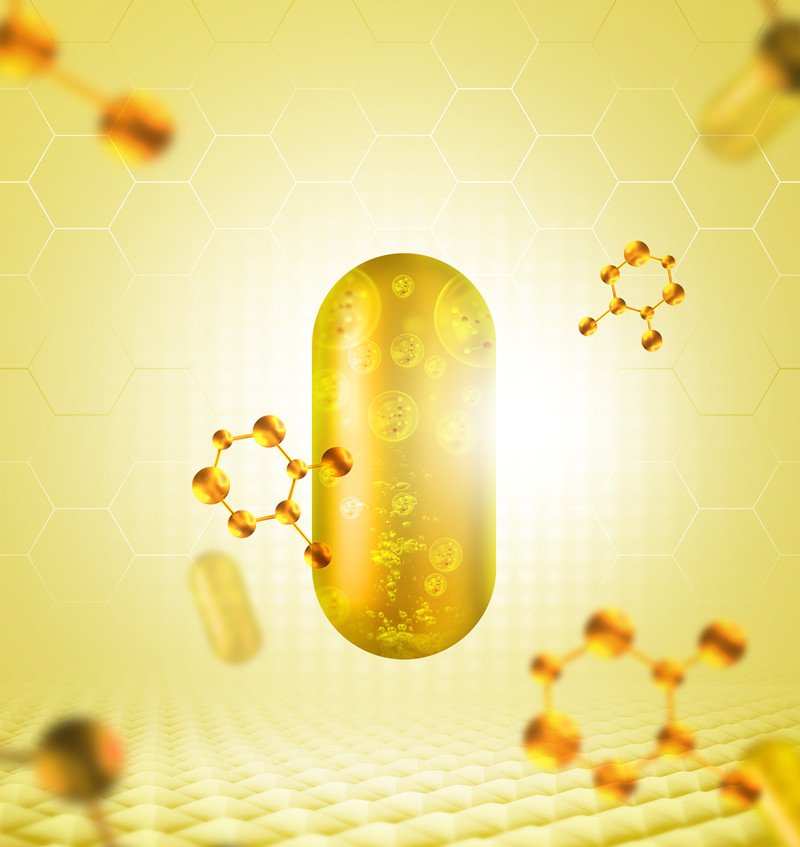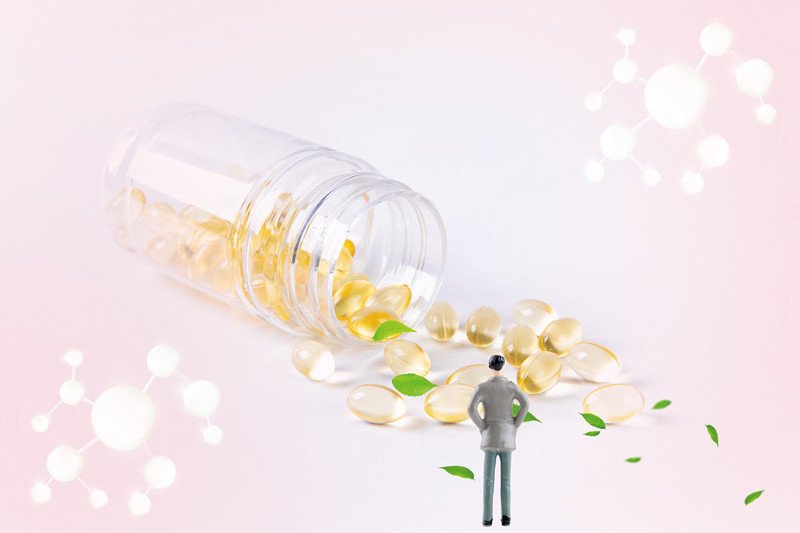Abstract: This article briefly introduces the structure, function, classification of collagen and gelatin, and introduces the method of collagen gelatinization.
1 Overview of collagen
Collagen is the most abundant and most widely distributed protein in animals. It is found in all tissues from lower vertebrates to mammals, accounting for about 25-30% of total animal protein.
Collagen has a triple helix structure. Its triple helix structure is formed by three α-chains linked by a covalent bond, and α-chains can be divided into several subtypes, which form different types of collagen through different combinations. There are 27 types of collagen, including type I collagen, type II collagen, and type III collagen. Type I collagen, composed of two α1-peptide chains and one α2-peptide chain, is the most important collagen in various organs of the body, accounting for 85% ~ 90% of all collagen. It is found mainly in the skin and bones of animals.
Collagen is a white, opaque, non-branched-chain fibrous protein, insoluble in water, acid, alkali, salt solution, and general solvent. It has a certain degree of protease tolerance, but in a certain value of hot water can occur in a certain degree of hydrolysis, into a low-molecular-weight, soluble in hot water, and have a certain viscosity of gelatin.
Like other proteins, collagen has many acidic and basic side groups, carbonyl groups, and amino groups at both ends, so it has amphoteric electrolyte properties. The amphoteric properties of collagen cause the peptide chains to carry the same charge and repel each other in the solution deviating from the isoelectric point. This repulsive force can destroy the hydrogen bond, ion bond, and even covalent bond between the collagen chains, so that the collagen peptide chains gradually separated, leading to a loose collagen structure. In an aqueous solution, many polar groups on the surface of collagen molecules can combine with water molecules by oxygen bonding to form a layer of water molecules, which is called collagen hydration. Collagen can be expanded by hydration. The expanded collagen further absorbs water to form a gel by prolonging the soaking time in the water.
In addition, collagen is associated with the reactions of amino groups, carbonyl groups, and chemical property groups of common proteins.

2 Introduction to gelatin
Gelatin is produced by the degradation of collagen in animal skin, bone, sarcolemma, tendon, and other connective tissues. It is one of the most important natural biopolymers and has been widely used in the food, medicine, and chemical industry.
Gelatin is a white or yellowish, translucent, slightly glossy flake or powder. It is an odorless, tasteless, non-volatile, transparent hard amorphous material, soluble in hot water, insoluble in cold water, but can slowly absorb water expansion softening. Gelatin can absorb 5-10 times its weight in water.
Gelatin, a product of collagen denaturation, is a thermally reversible mixture with no fixed structure and no relative molecular weight. Its molecular weight ranges from tens of thousands to one hundred thousand kd (< 300KD). The content of water and inorganic salt in gelatin is about 16%, and the content of protein is over 82%.
Similar to the mother collagen, gelatin is composed of 18 kinds of amino acids, of which Pro and HYP have higher contents. The existence of these two imino acids plays an important role in the structure and properties of gelatin. Because the trihelix-like structure in gelatin mainly depends on the intramolecular oxygen bond and oxygen bond hydration, and Pro-NH and Hyp-OH can form oxygen bonds with other amino acid side chain groups and water molecules, which is beneficial to the stability of the trihelix-like structure. Therefore, the gelation performance of the mammal gelatin with high imino acid content was better than that of fish skin gelatin.
Gelatin has many excellent functional properties, such as gelation, water-holding, film-forming, emulsifying, and foaming. Gelation is the most important functional property of gelatin. It refers to the glue molecules under certain conditions from the irregular crimp state gradually restored to an ordered triple helix structure. This process is divided into three stages: first, when the temperature drops below the freezing point (about 35 °) , the irregular coiled polypeptide chains in the gelatin solution are recoiled into a left-handed helix, and the adjacent left-handed helical chains interact with each other to produce hydrogen bond cross-linking, to reconstitute the core region of the collagen-like spirochetes. This process is called Renaturation. Second, collagen-like spirochetes polymerize to form microgels. Thirdly, the aggregates further form a network gel with a certain rigidity.
The gelation property of gelatin is affected by amino acid composition, average molecular weight, and molecular weight distribution, concentration and pH of gelatin solution, gelation temperature, and freezing time. The gelation property of gelatin is usually measured by gel strength, gel temperature, and melting temperature.
Gelatin can be divided into edible gelatin, medical gelatin, and industrial gelatin according to their uses. It is an important ingredient and additive in the food industry. It is often used as a gelling agent, stabilizer, emulsifier, thickener, and clarifier in the production of meat products, cakes, ice cream, beer, fruit juice, and so on. Gelatin is most commonly used in medicine as a capsule to encapsulate the drug. In addition, gelatin in fiber textile, insulation materials, paper, holographic materials manufacturing is very useful.

3 Collagen gelatinization
Gelatin is an irreversible degradation product of collagen and a soluble polypeptide mixture, which has no biological activity. The transition from collagen to gelatin mainly goes through two processes: one is the collagen gelation process, also known as the pretreatment process. Through acid, alkali, or enzyme, the covalent cross-linking and non-covalent bond of stable collagen were destroyed, then the triple helix structure of collagen was loosened, and the non-helix crystal region was destroyed. The second, the hot water extraction process. Under the thermal action of gelatinized collagen, non-covalent bonds such as hydrogen bonds and some covalent bonds are broken, and the treponemes are transformed into irregular thread groups, the α-peptide Chain is released and retained in the gelatin in the form of α, β (α component dimer), γ (α component trimer) and other subunit components.
The ideal gelatin consists only of the alpha component, each collagen molecule in the collagen is unwound into a single three-strand chain. But the actual production of gelatin is uneven protein. The subunit groups in collagen mainly exist in three forms: 1 the three-stranded peptide chains of collagen are completely released to form three independent peptide chains with different molecular weight (80-125kDa); 2 the one peptide chain is completely released, the covalent bonds between the other two peptide chains were completely broken, but they were still connected by partial hydrogen bonds. The molecular weight of the three peptide chains was 160-250kda 3, and the molecular weight of the three peptide chains was 240-375kda.
The gelation degree of collagen plays an important role in the physical and chemical properties of gelatin, such as gel strength, gel melting temperature, and degree of DOT. Therefore, the factors such as temperature, time, and so on should be strictly controlled in the process of collagen gelatin gelation. Based on destroying the non-covalent bonds of collagen, we should keep the integrity of the subunits as much as possible.
The preparation of gelatin mainly includes two steps: collagen gelatin gelation and heat treatment. Collagen gelation is a very important step in the preparation of gelatin. This process can effectively destroy the oxygen bond and covalent cross-linking which maintain the stability of the third and fourth structure of collagen, and make the three-dimensional structure lose enough, to facilitate the sequential extraction of collagen. So the commonly said gelatin preparation method mainly refers to the collagen gelatin gelation method.
At present, there are many methods of collagen gelation, such as the acid-base method, modified acid-base method, and enzymatic hydrolysis method. In addition, the application of new processing technologies such as ultra-high pressure in inducing collagen gelation has attracted much attention in recent years.


